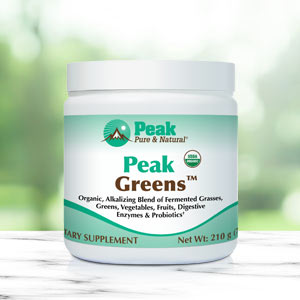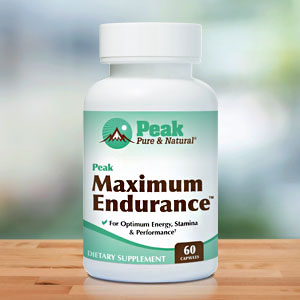Get Easy Health Digest™ in your inbox and don’t miss a thing when you subscribe today. Plus, get the free bonus report, Mother Nature’s Tips, Tricks and Remedies for Cholesterol, Blood Pressure & Blood Sugar as my way of saying welcome to the community!
4 ways mouth breathing wrecks your health

Have you ever woken up in a puddle of drool?
Odd question, I know. But if you have, then it’s almost a guarantee that you’ve been breathing through your mouth at night instead of your nose.
Mouth breathing every once in a while isn’t necessarily a bad thing. But if you habitually breathe through your mouth, you could be putting yourself at risk of a lot of health complications.
Let’s talk about those and why it’s important to know all the signs as well as how to retrain your breathing habits to use your nasal airways instead of your mouth…
4 problems mouth breathing can lead to
Some of the less serious effects of mouth breathing include dry mouth and bad breath. However, mouth breathing can also cause real damage to your health…
Take sleep apnea, for instance. In adults, night mouth breathing is responsible for almost all incidences of obstructive sleep apnea-hypopnea syndrome (OSAHS). With obstructive sleep apnea, your breathing is interrupted during sleep for longer than 10 seconds at least 5 times per hour on average. Sudden drops in blood oxygen levels that occur during OSA increase blood pressure and strain the cardiovascular system.
According to research, people with OSAHS typically have a mix of its four phenotypes, and no one treatment works for all. However, since mouth breathing is the primary condition that leads to the type of pharyngeal airway collapse that can cause OSAHS, breathing re-education (BRE) can help in most cases. (More on that in a minute.)
Mouth breathing can also lead to dental problems and gum disease. Much of the harm comes from the fact that it has a major impact on your saliva. When mouth breathing dries out your mouth, there’s less saliva to wash out bacteria that flourish on the teeth and gums and can lead to tooth decay, gingivitis and gum disease. A dry mouth can also throw off the pH balance in your mouth by changing acidity levels. An unhealthy level of acidity can degrade your tooth enamel.
Mouth breathers tend to have posture problems and muscle fatigue because they carry their heads forward to compensate for a restricted airway. This poor posture can lead to neck pain, temporomandibular joint (TMJ) tension, compression of the spinal discs, early arthritis, tension headaches and bite problems. It also causes the muscles in the chest to tighten, making it even harder to breathe.
Mouth breathing can also result in the ineffective release of nitric oxide (NO). NO is a signaling molecule that is naturally produced by the body and contributes to many health functions. You may have heard of the nitrate–nitrite–nitric oxide pathway which produces NO from certain foods we eat. But NO is also taken into the body from the nasal airways where it flows to the lungs and is absorbed into the bloodstream to oxygenate the blood. Of course, this hinges on nasal breathing. Mouth breathers miss out and their cells don’t get as much oxygen. That can lead to fatigue and disorders made worse by low NO, including some that affect heart health.
Training to breathe through your nose
So, how do you know if you’re a mouth breather? And how can you stop?
As I mentioned before, a puddle of drool on your pillow is one sign. A constantly stuffy nose also pretty much guarantees you’ll be breathing through your mouth. Other signs include snoring, dry mouth or lips, bad breath, cavities, poor sleep, sore throat, morning headaches, cold symptoms, frequent sinus or respiratory infections, red or inflamed gums, crowded teeth, digestive issues and brain fog.
If you’re not sure you’re a mouth breather, you can have a professional conduct a Glatzel mirror test to see if the breath is being exhaled symmetrically through the nose. The test also checks for breathing obstructions like enlarged adenoids or a deviated septum.
To switch from mouth to nasal breathing during rest, exercise and sleep, you need to undergo breathing re-education (BRE). BRE includes exercises that improve the strength and function of breathing muscles like the diaphragm. It also involves restoring the proper resting position of the tongue, which is important in sleep apnea because it maintains an open airway.
Myofunctional Therapy (MT) is helpful to re-educate the tongue muscles and improve tone and function in the upper airways. MT can also restore nasal breathing during sleep.
There’s also the Buteyko Breathing Method, developed in the 1950s by Russian respiratory physiologist Dr. Konstantin Buteyko. This breathing technique has been used by Patrick McKeown to train elite athletes in optimal breathing. Here is a 10-minute video in which McKeown demonstrates the Buteyko method if you want to try it for yourself.
Editor’s note: There are perfectly safe and natural ways to decrease your risk of blood clots including the 25-cent vitamin, the nutrient that acts as a natural blood thinner and the powerful herb that helps clear plaque. To discover these and other secrets of long-lived hearts, click here for Hushed Up Natural Heart Cures and Common Misconceptions of Popular Heart Treatments!
Sources:
Benefits of Breathing through Your Nose — drglante.com
Five Critical Facts Everyone Should Know About Mouth Breathing — Dentalroots.com
Breathing Re-Education and Phenotypes of Sleep Apnea: A Review — Journal of Clinical Medicine
Obstructive Sleep Apnea — Johns Hopkins Medicine
Could Breathing Re-Education Answer the Need for Personalized Sleep Apnea Treatment? — Dental Sleep Practice














